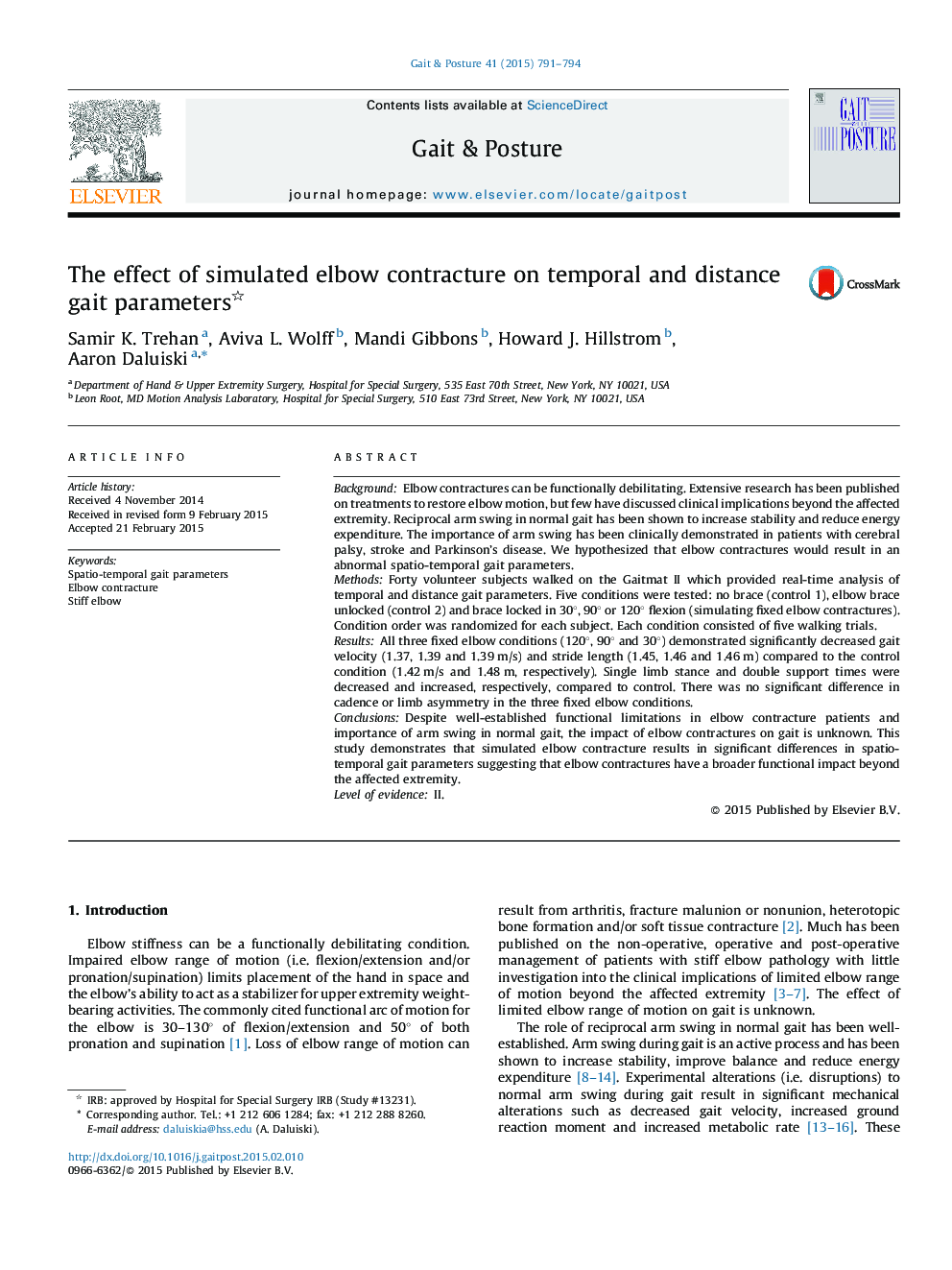| Article ID | Journal | Published Year | Pages | File Type |
|---|---|---|---|---|
| 6206237 | Gait & Posture | 2015 | 4 Pages |
â¢Temporal and distance analysis of 40 subjects done under normal and elbow contracture conditions.â¢Elbow contracture leads to significantly decreased gait velocity and step length.â¢Elbow contracture leads to increased single limb stance and double support times.â¢Elbow contracture does not affect cadence or limb asymmetry during gait.â¢Elbow contracture likely affects patient function beyond affected extremity.
BackgroundElbow contractures can be functionally debilitating. Extensive research has been published on treatments to restore elbow motion, but few have discussed clinical implications beyond the affected extremity. Reciprocal arm swing in normal gait has been shown to increase stability and reduce energy expenditure. The importance of arm swing has been clinically demonstrated in patients with cerebral palsy, stroke and Parkinson's disease. We hypothesized that elbow contractures would result in an abnormal spatio-temporal gait parameters.MethodsForty volunteer subjects walked on the Gaitmat II which provided real-time analysis of temporal and distance gait parameters. Five conditions were tested: no brace (control 1), elbow brace unlocked (control 2) and brace locked in 30°, 90° or 120° flexion (simulating fixed elbow contractures). Condition order was randomized for each subject. Each condition consisted of five walking trials.ResultsAll three fixed elbow conditions (120°, 90° and 30°) demonstrated significantly decreased gait velocity (1.37, 1.39 and 1.39 m/s) and stride length (1.45, 1.46 and 1.46 m) compared to the control condition (1.42 m/s and 1.48 m, respectively). Single limb stance and double support times were decreased and increased, respectively, compared to control. There was no significant difference in cadence or limb asymmetry in the three fixed elbow conditions.ConclusionsDespite well-established functional limitations in elbow contracture patients and importance of arm swing in normal gait, the impact of elbow contractures on gait is unknown. This study demonstrates that simulated elbow contracture results in significant differences in spatio-temporal gait parameters suggesting that elbow contractures have a broader functional impact beyond the affected extremity.Level of evidenceII.
